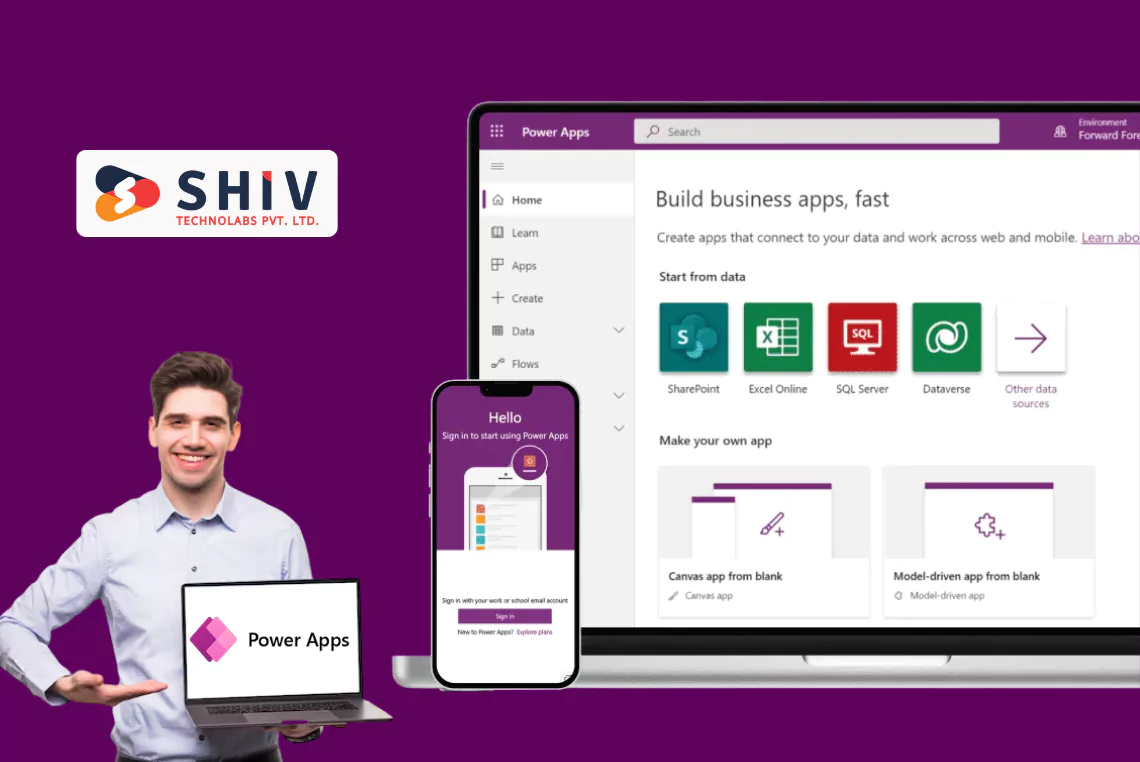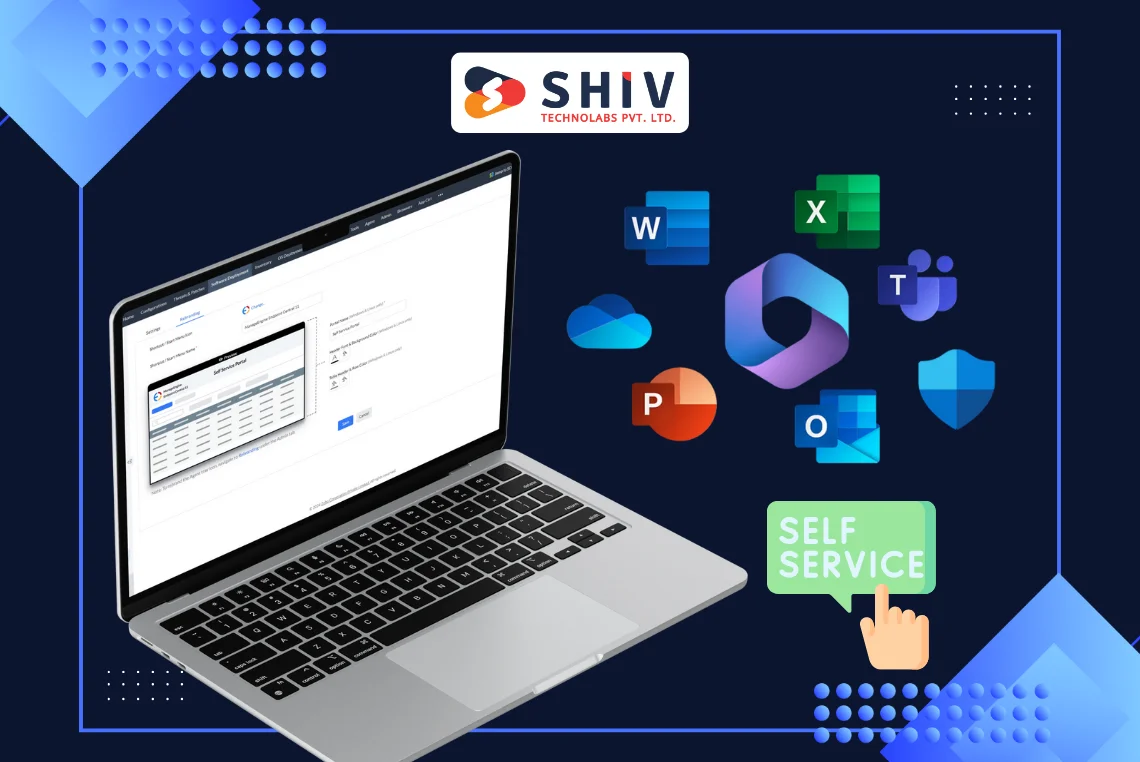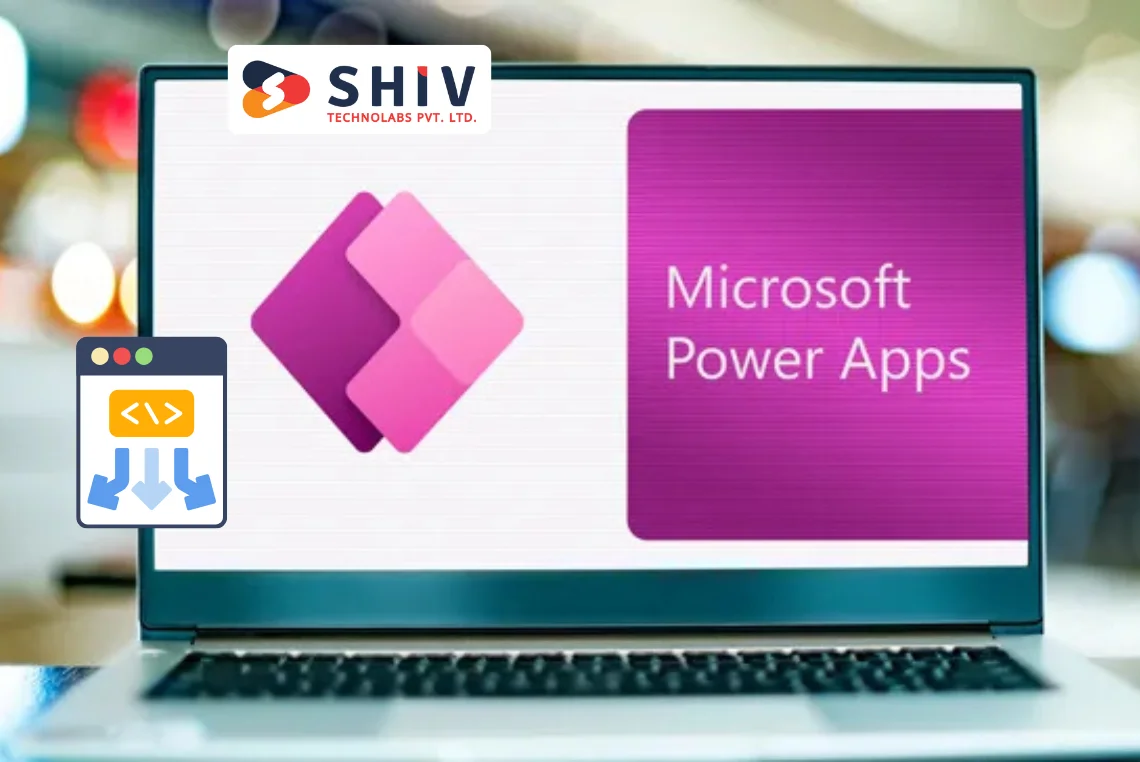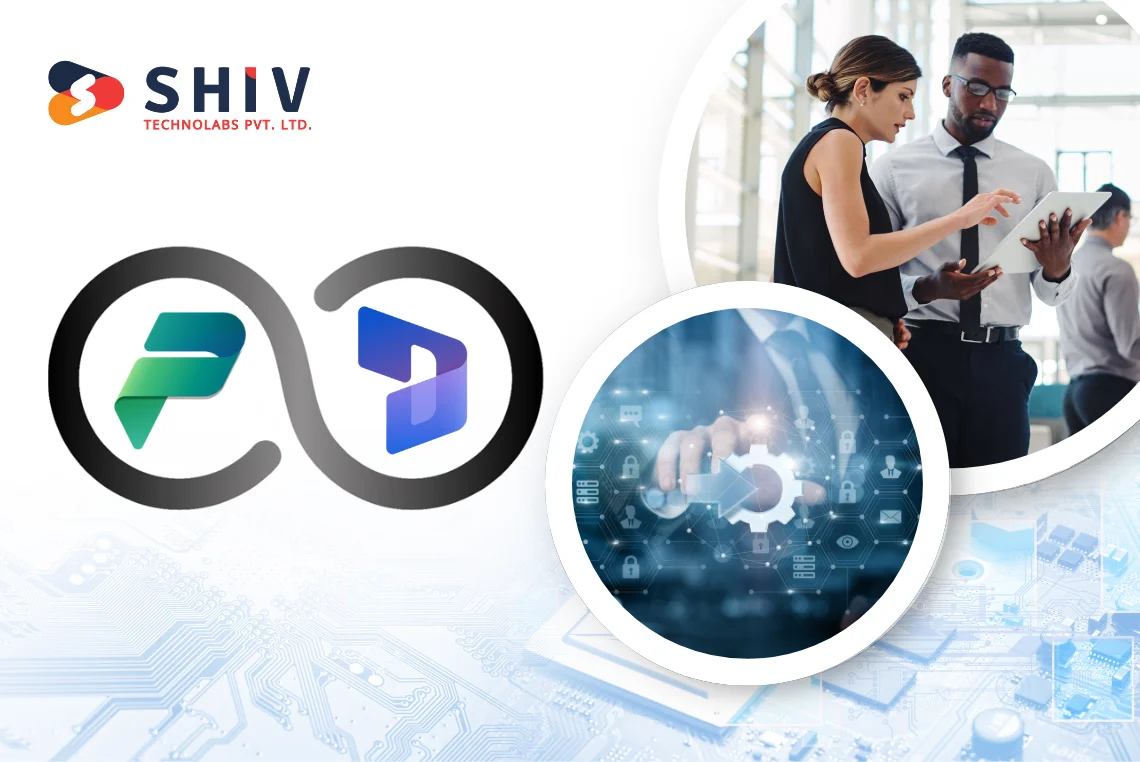Table of Contents
PowerApps enterprise automation solutions enable companies worldwide to replace the outdated approach to work with smart and automatic systems. Many businesses hire PowerApps developers to build custom tools that work with their current systems and meet business needs. Expert developers create automation that runs quickly, stays secure, and grows along with the company.
Large companies struggle with slow manual work, scattered data storage, and expensive operations. The right PowerApps automation approach fixes these problems by creating smooth, connected, and data-based workflows. This work goes beyond simple app creation. It involves building systems that provide clear improvements in speed, teamwork, and smart decision-making.
Why Enterprises Need Custom Automation with PowerApps
Business automation has become essential for large companies to remain successful. Microsoft PowerApps automation development helps enterprises replace repeated manual tasks with automatic, data-connected applications.
Transforming Complex Workflows into Digital Processes
PowerApps helps developers change lengthy, complicated workflows into fast, automatic processes that cut delays and reduce mistakes. This capability helps big organizations maintain accuracy and speed in important business tasks.
Benefits for Scalability, Data Integration, and Cost Savings
Automatic PowerApps solutions grow easily when companies expand their operations. They connect with different systems to provide instant access to accurate information. This connection leads to cheaper operating costs and faster project completion times.
Strategic Value in Enterprise Environments
In tough markets, building enterprise automation with PowerApps gives companies important advantages by improving flexibility, rule following, and customer service. It creates a base for ongoing innovation without changing existing computer systems.
Core Capabilities That Make PowerApps Ideal for Automation
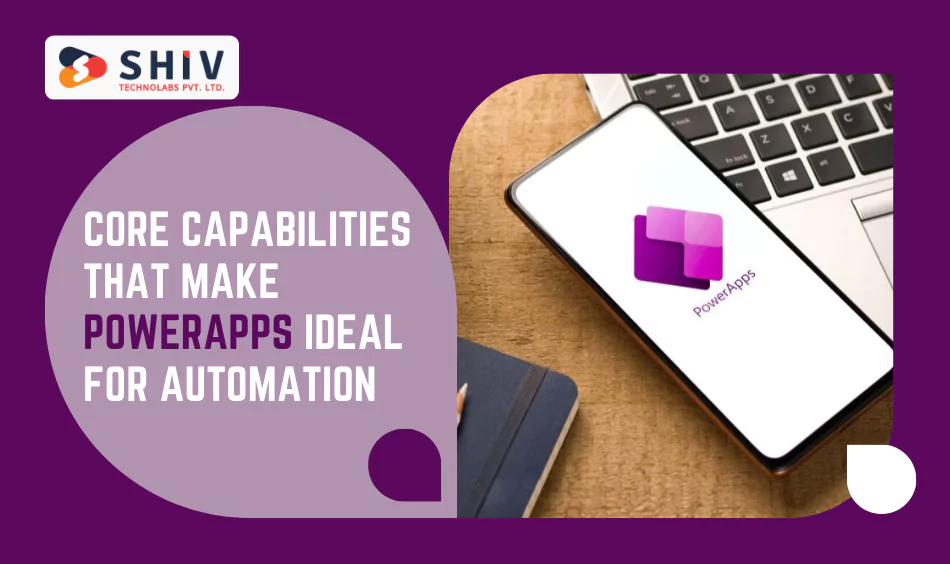
PowerApps excels in automation work because it brings together flexibility, speed, and business-grade dependability.
Low-Code Architecture for Faster Deployment
The low-code system will enable the developers to produce enterprise-level automation solutions in the shortest time and without compromising quality. This approach means faster benefits for businesses and the power to change solutions when needs shift.
Cross-Platform and Multi-System Integration
PowerApps is compatible with Microsoft 365, Dynamics 365 or SharePoint and other external platforms. This interface facilitates the flow of data across departments, eliminating obstacles and enhancing efficiency in the overall work.
Enterprise-Grade Security and Governance
Security stays central in PowerApps automation services. Developers add role-based access controls, secure login systems, and rule-following features to protect important data while meeting industry standards.
Process Developers Follow to Build Enterprise Automation Solutions
Any powerful enterprise automation solution based on PowerApps needs to be created in a step-by-step planned methodology.
Requirement Gathering and Business Process Mapping
Developers start by learning about company goals and studying current processes. This phase helps find where automation provides the biggest benefits and how workflows can be improved.
Application Design and User Experience Planning
Good design remains critical for people to use the system. Developers plan screens that stay simple, easy to reach, and match how employees already work, ensuring smooth adoption during launch.
Automation Workflow Development
Combining Power Automate with PowerApps, developers create automation that manages things that are repeated, such as entering data, approvals, and reports, and leave workers to do the work that is more important to the firms.
Testing, Deployment, and Ongoing Optimization
All automations are tested according to speed, compatibility, and security prior to live. After launch, developers watch performance and make changes to keep the solution working with changing business needs.
Real-World Impact of PowerApps Enterprise Automation Solutions
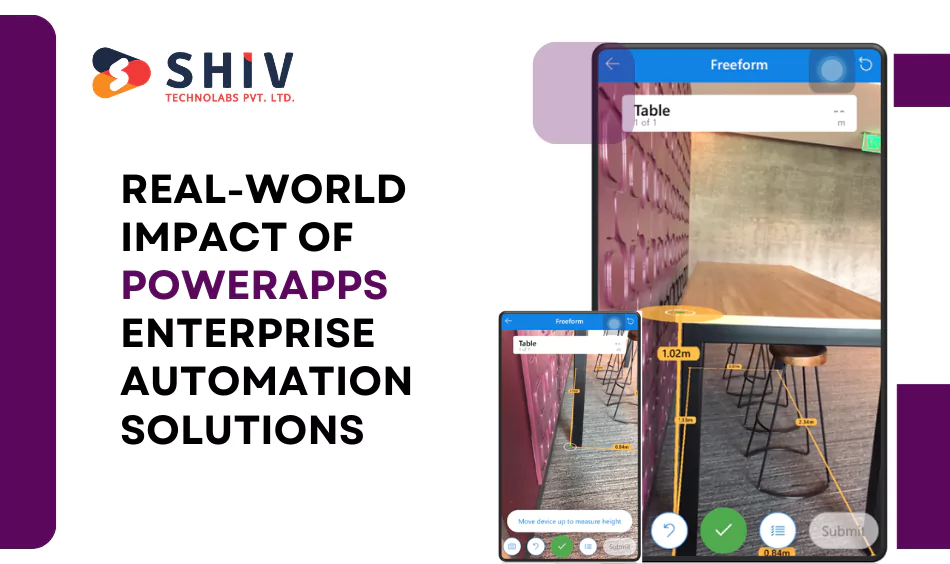
Companies using PowerApps see clear improvements in efficiency, productivity, and decision-making. Automatic workflows cut processing times, lower operating costs, and improve accuracy across all departments.
One example shows a manufacturing company cut order processing time from several days to just hours by automating approval workflows. A shipping company used Microsoft PowerApps automation development to link tracking information with customer service, cutting customer questions by 40%. These outcomes happen through smart process design and connections that match company goals.
Why Hiring Expert PowerApps Developers Makes the Difference
PowerApps offers low-code features, but building business-grade automation needs experience, technical knowledge, and strong understanding of business processes.
Expert developers know how to use the complete Microsoft Power Platform for maximum results. They understand proven methods for security, connections, and growth. Working with a team that focuses on PowerApps automation services ensures your solution works well for performance, rule following, and user acceptance.
Start Your Automation Journey Today
Creating enterprise automation with PowerApps provides a strong way to prepare your operations for the future. Working with experienced developers means your solution will follow industry standards, fit your workflows, and grow for many years ahead.
When you hire PowerApps developers from a proven team, Shiv Technolabs, you get a dedicated team that is well-versed in making your automation goals into reality. Our team of experts stands by your end at every edge of the automation journey, assisting you with automating a single workflow or changing your complete digital system.
Conclusion
PowerApps enterprise automation solutions change how large organizations work every day. They introduce efficiency, accuracy, expansion capacity, and increased security even to the most complex processes. The automation development using Microsoft PowerApps allows enterprises to unite systems, eliminate delays, and obtain competitive advantages in each industry.
Ready to change your enterprise workflows into efficient, automatic systems? Work with Shiv Technolabs for expert PowerApps automation services that provide speed, security, and clear results. We will create and develop solutions that will link seamlessly with the tools you use and expand with your business. Get in touch with Shiv Technolabs today to start automating your goals and see them realized tomorrow.
Frequently Asked Questions
1. What makes PowerApps different from other automation platforms for enterprises?
PowerApps is a low-code platform with enterprise security. It can be easily interconnected with the Microsoft products that most companies are already using. The platform manages complicated business rules without being sophisticated, which makes it simple to be changed and updated in a short process of time.
2. How long does it take to develop a complete PowerApps enterprise automation solution?
The duration of creating it will depend on the complexity of the project and the connections that the systems require. Basic automation can take 2 to 4 weeks. Solutions integrating many departments are usually more complex, with the scheduling taking 2 to 3 months to be fully implemented.
3. Can PowerApps automation work with our existing software and databases?
Indeed, PowerApps integrates with hundreds of various systems and databases. It is compatible with well known commercial software, cloud services, and custom databases. Connections can be created to nearly any system used in your company.
4. What kind of ongoing support do PowerApps automation solutions need?
To perform best, PowerApps solutions require scheduling of updates and monitoring. That is security updates, improvements, and performance. Monthly check-ups and quarterly reviews of systems are beneficial to the majority of companies.
5. How do we measure the success of our PowerApps automation investment?
Success is quantified in terms of time saved, reduction of cost, and removal of errors. Business organizations normally monitor processing rates, the rate of employee output, and customer satisfaction ratings. The majority of businesses experience quantifiable change within a period of three months of deployment.

